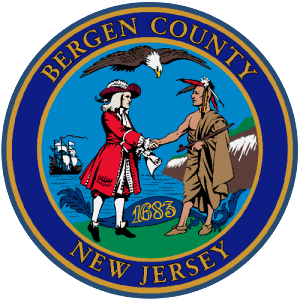
Environmental Resources
Bergen County and Essex County have joint jurisdiction of the Kingsland Avenue Bridge, however the Federal Highway Administration (FHWA) provides the funding for this project. Any transportation projects receiving Federal funding must also follow the National Environmental Policy Act (NEPA) process.
The New Jersey Department of Transportation (NJDOT) Bureau of Environmental Resources (BEPR) oversees this aspect of the project in cooperation with both Counties and NJTPA. They coordinate with the permitting agencies, such as NJDEP and NJSHPO (New Jersey State Historic Preservation Office), to develop a cohesive plan for proposed improvements. The agencies look carefully at comments from the public, therefore community involvement is an important part of the environmental process and moving the project forward with consensus and environmental compliance.
The LCD Study Phase required the identification of any environmental concerns and to develop an environmental profile. When analyzing alternatives, the Project Team looked to avoid or minimize environmental impacts and, if that was not possible, then to provide mitigation. The environmental resources include air, noise, hazardous or contaminated sites, parks, wetlands, water resources, social and economic impacts, and cultural resources such as historic structures and facilities.
During the LPE Phase environmental and cultural resource studies will continue. The results of the environmental screening and cultural resource studies, which are part of the project schedule, are presented at the public meetings. Environmental mitigation and permitting are part of the FD Phase.
As established in FHWA’s guidance on NEPA Transportation Decisionmaking
The National Environmental Policy Act (NEPA) requires examination of potential impacts to the social and natural environment when considering proposed transportation projects involving federal funds or approval action. Supporting the Act, the Federal Highway Administration (FHWA) and NJDOT adopted the policy of managing the NEPA project development and decision-making process as an “umbrella,” under which all applicable environmental laws, executive orders, and regulations are considered and addressed prior to the final project decision and document approval. This umbrella includes laws relating to historic preservation, endangered species, wetlands, parks, and others. Conclusion of the NEPA process results in a decision that addresses multiple concerns and requirements.
The FHWA NEPA process allows transportation officials to make project decisions that balance engineering and transportation needs with social, economic, and natural environmental factors. During the process, a wide range of partners including the public, businesses, interest groups, and agencies at all levels of government, provide input into the project and environmental decisions.
The NJDOT Bureau of Environmental Program Resources oversees compliance with the principles or essential elements of NEPA compliance throughout the project delivery process, including:
- Assessment of the social, economic, and environmental impacts of a proposed action or project
- Analysis of a range of reasonable alternatives to the proposed project, based on the applicants defined purpose and need for the project
- Consideration of appropriate impact mitigation: avoidance, minimization and compensation
- Inter-agency participation: coordination and consultation
- Public involvement including opportunities to participate and comment
- Documentation and disclosure
| Project Development Phases | Documentation/Action | Coordination |
|---|---|---|
| Concept Development | Purpose & Need, Environmental Screening Report and Alternatives Analysis | Project Team, Public, Stakeholders and Permitting Agencies |
| Preliminary Engineering | Technical Environmental Studies (as needed), Categorical Exclusion | Project Team, Public, Stakeholders, Permitting Agencies |
| Final Design | Permits, Environmental Reevaluation, Environmental Plan Sheets and Environmental Mitigation | Project Team, Public, Stakeholders, Permitting Agencies |
| Construction | Environmental Mitigation, Construction Monitoring | Project Team, Public, Stakeholders, Permitting Agencies, Contractor |
Environmental Documents:
Local Capital Project Delivery Process
Purpose & Need Statement
Data Collection & Environmental Screening Report
Selection of Preliminary Preferred Alternative
Concept Development Report
NEPA Classification
Create Design Communications Report
Initial Public Outreach & Involvement
Approved Design Exception Report
Cost Estimates (Final Design, ROW & Construction)
Approved Environmental Document
Approved Project Plan
Preliminary Engineering Report
Update Design Communications Report
Continued Public Outreach & Involvement
Construction Contract Documents & PS&E Package
Environmental Reevaluations
Environmental Permits
Acquisition of ROW
Update Design Communications Report
Continued Public Outreach & Involvement
Implement and Complete Construction
Continue Public Outreach
As-Builts
Update and Finalize Design Communications Report
Close-out Documentation
Recent News
Update: May 23, 2024
Meeting Report for Public Information Center (PIC) Meeting No. 1 is now available
Update: February 29, 2024
Thank you to those who were able to attend the Public Information Center (PIC) Meeting No. 1 for the Local Preliminary Engineering (LPE) phase.
Update: January 24, 2024
Save the Date: Online Public Information Center for the Local Preliminary Engineering (LPE) phase

